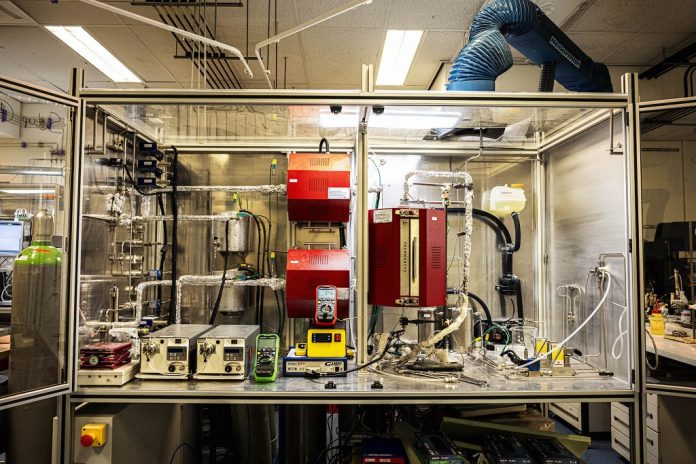
Green hydrogen is seen as a game-changer for the future of energy.
It has many promising uses: it can act as a “battery” for energy storage, be used in the chemical industry, and its only emission is water vapor.
However, despite its potential, green hydrogen is not widely used yet because producing gray hydrogen from natural gas is much cheaper.
Additionally, storing hydrogen presents challenges, and it’s not as environmentally friendly as it seems since hydrogen is an indirect greenhouse gas.
Researchers at the University of Groningen are working hard to overcome these obstacles.
Hydrogen is the simplest and smallest element, and it was one of the first elements formed after the Big Bang. It is found everywhere, such as in water (H2O), natural gas (mostly methane CH4), and ammonia (NH3).
However, pure hydrogen (H2) is rare in nature and is usually bonded to other elements.
Separating hydrogen from these elements requires energy. When hydrogen recombines, this energy is released, though with some loss.
How Humans Want to Use Hydrogen The concept of green hydrogen involves using renewable energy to split water into hydrogen and oxygen.
This process can store excess power from solar panels and wind turbines, effectively creating a “green battery.” When hydrogen bonds with oxygen again, it produces water and releases energy.
Hydrogen’s bonding properties make it useful for various applications. For example, farmers use fertilizers based on ammonia (NH3), and hairdressers use hydrogen peroxide (H2O2) for bleaching hair.
Currently, these products mostly use gray hydrogen from natural gas, which produces carbon dioxide (CO2) as a by-product. This is because hydrogen from water is about five times more expensive than hydrogen from natural gas.
Researchers at the University of Groningen are working on making the production of hydrogen from water more efficient and affordable. They are also exploring its applications in transportation and the chemical industry.
Storing Hydrogen is Not Easy After figuring out how to produce green hydrogen cheaply and efficiently, it needs to be stored or transported to where it is needed.
Ideally, hydrogen gas could be transported and stored like natural gas using existing pipelines and underground storage fields.
However, this is challenging. Hydrogen molecules (H2) are much smaller than natural gas molecules, making it easier for hydrogen to escape through tiny cracks in pipelines. Even worse, hydrogen can make metals brittle, causing them to break like glass.
Because of these issues, researchers at the University of Groningen are also studying the effects of hydrogen on materials used for storage and transportation.
They aim to find solutions that prevent hydrogen from leaking and ensure the materials remain strong and safe.
In summary, while green hydrogen holds tremendous promise, several technical challenges must be addressed before it can be widely adopted. Researchers are hard at work to make green hydrogen a viable and sustainable energy source for the future.
Source: KSR.



